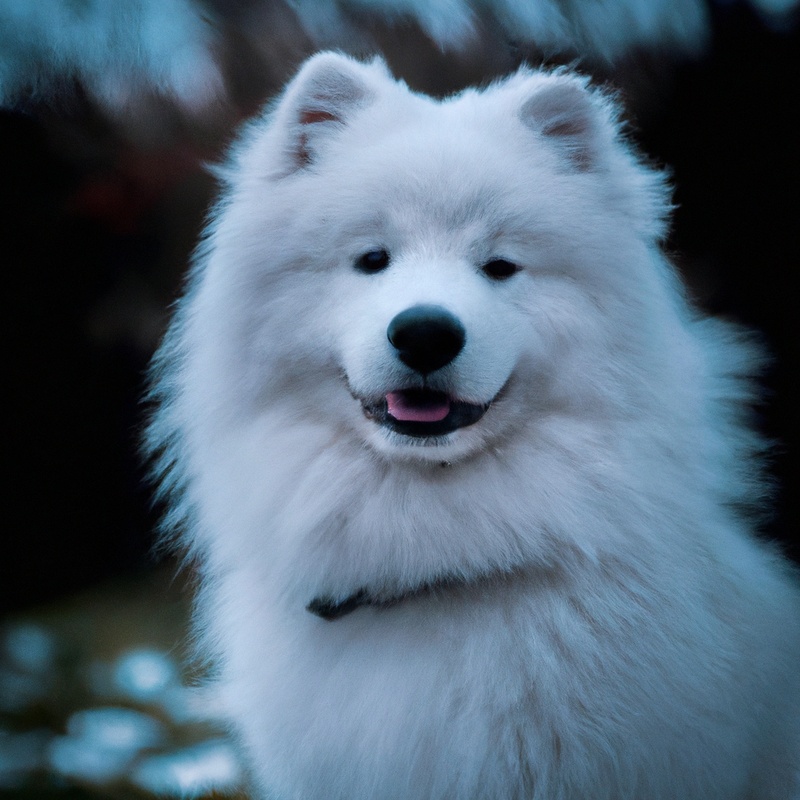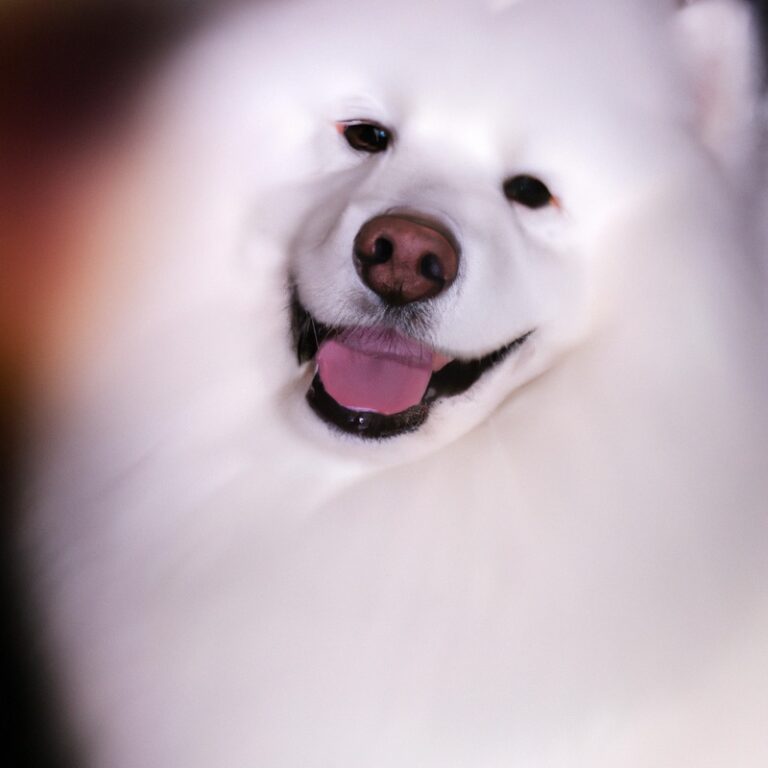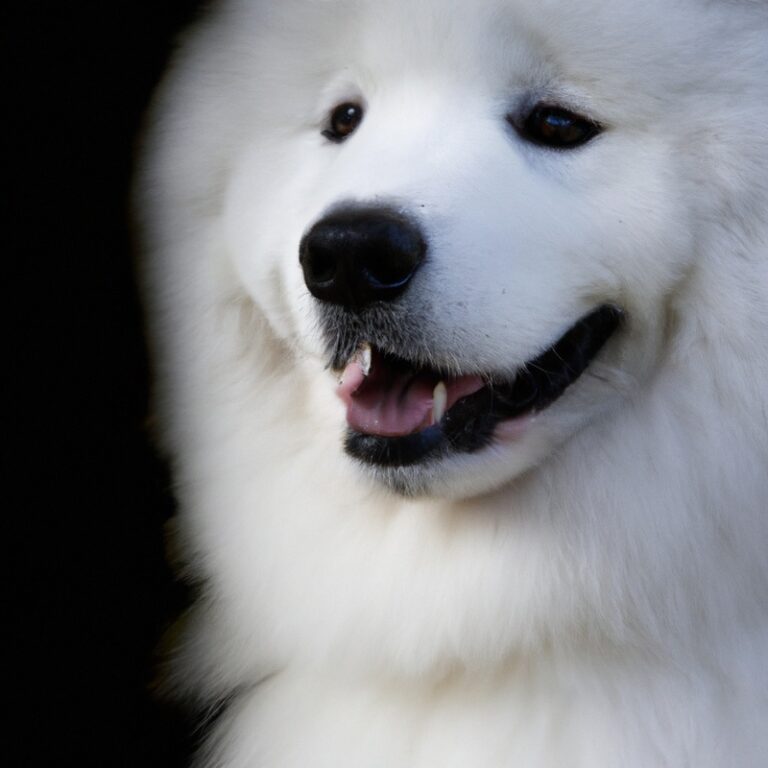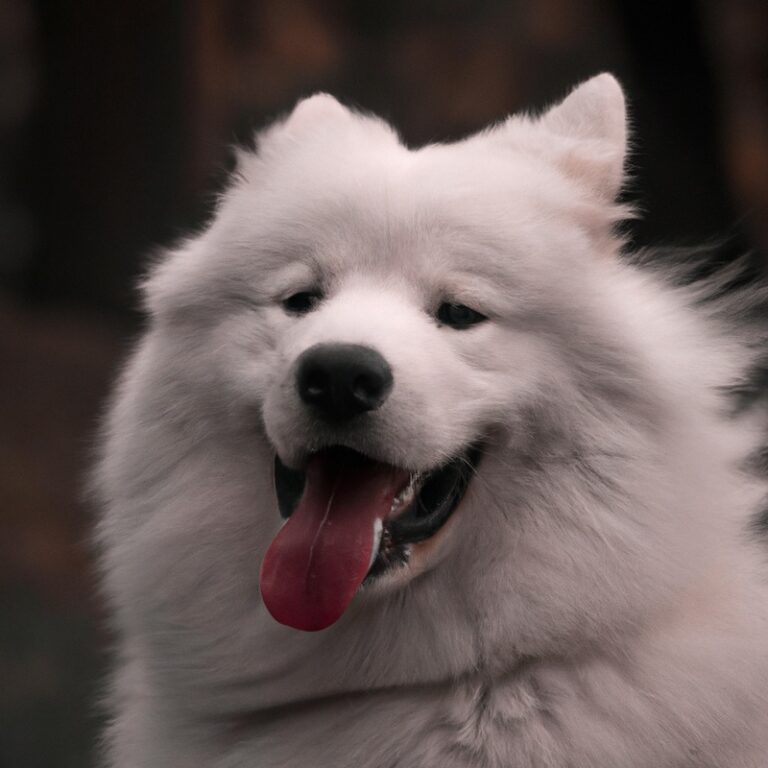Can Samoyeds Be Kept With Other Pets?
Key Takeaways:
- Samoyeds can generally get along well with other pets if properly socialized.
- It’s important to introduce Samoyeds to other pets gradually and supervise their interactions.
- Samoyeds have a strong prey drive and may not be suitable for households with smaller or more fragile pets.
- Early socialization and training are key to ensuring a harmonious relationship between Samoyeds and other pets.
Are you a proud Samoyed owner? Or perhaps you’re considering adding a fluffy white bundle of joy to your family.
Either way, one burning question you may have is whether Samoyeds can coexist with other pets.
As an expert in the field, I can confidently tell you that it is indeed possible. However, there are a few factors to consider and steps to take to ensure a harmonious environment for all furry friends involved.
In this article, we’ll delve into the temperament of Samoyeds, discuss their compatibility with different types of pets, explore strategies for introducing them to other animals, and address potential issues that may arise.
So, let’s dive in and find out if Samoyeds can be kept with other pets!
| Other Pets | Potential Compatibility with Samoyeds |
|---|---|
| Dogs | Generally, Samoyeds get along well with other dogs, especially if they are socialized properly from a young age. However, supervision and introductions are still important. |
| Cats | Samoyeds can coexist peacefully with cats if they are introduced and socialized early on. However, each individual dog’s temperament and prey drive should be considered. |
| Small Mammals | Samoyeds have a strong prey drive and may not do well with small mammals such as rabbits, guinea pigs, or hamsters. Caution and close supervision are advised. |
| Birds | Samoyeds have a high prey drive, so caution must be exercised when keeping them with birds. Proper training and supervision are necessary. |
Samoyeds and Their Temperament
Description of Samoyed temperament
Samoyeds have a friendly and affectionate temperament, making them great family pets.
They are known for their gentle and friendly nature, and they are often good with children and other pets.
Samoyeds are also highly intelligent and eager to please, making them trainable.
However, they can be independent at times and may exhibit stubbornness.
Additionally, they have a strong instinct to be vocal, and they are known to bark, howl, and “talk” to their owners.
With proper socialization and training, Samoyeds can be wonderful companions for both humans and other pets.

Discussion on their friendliness towards other pets
Samoyeds are generally friendly dogs and can get along well with other pets, including cats and smaller animals, if properly introduced.
Early socialization and training are important to ensure positive interactions.
It’s essential to supervise their interactions and provide them with a safe, controlled environment.
It’s always best to introduce new pets slowly and gradually, allowing for proper acclimation and establishing positive associations.
Remember, each dog is unique, so it’s important to assess their individual temperament and make decisions accordingly.
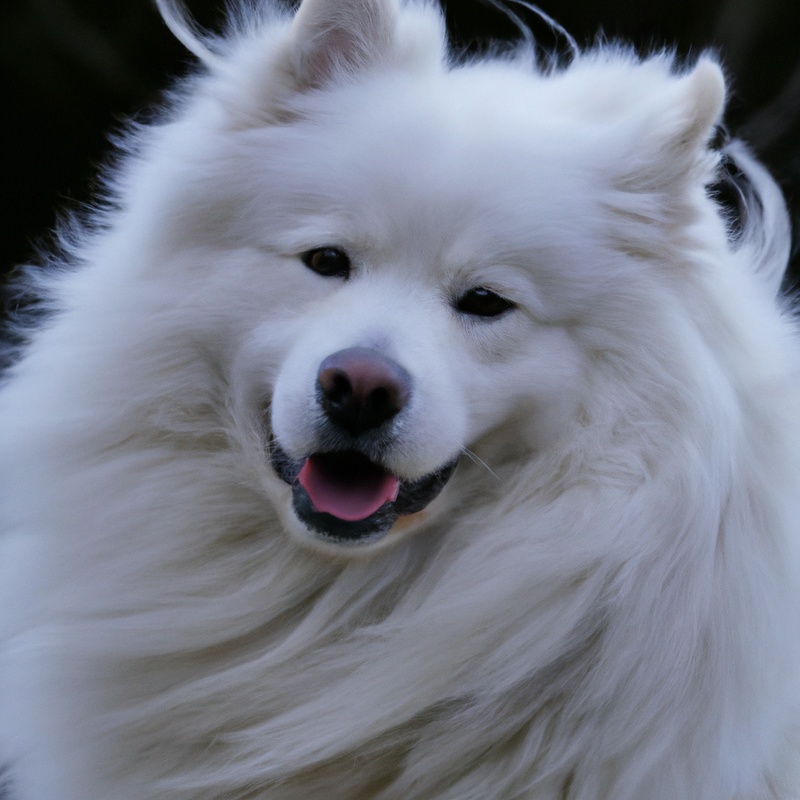
Considering the Type of Pet
Factors to consider before keeping Samoyeds with other pets
Before keeping Samoyeds with other pets, it’s important to consider a few key factors:
- Temperament: Samoyeds are known for their friendly and sociable nature. Ensure that the other pets in your household can also handle a friendly and outgoing breed like the Samoyed.
- Size and Energy Levels: Samoyeds are medium to large-sized dogs with high energy levels. Make sure that the other pets are of a similar size and have comparable energy levels to avoid any potential conflicts or imbalances in the household.
- Training and Socialization: Proper training and socialization are essential for all pets. Ensure that each pet has received appropriate training and socialization to promote harmonious interactions.
- Introductions and Supervision: Gradually introduce the Samoyed to other pets in a controlled and supervised environment. Be attentive and monitor their interactions to address any signs of aggression or discomfort.
- Space and Resources: Consider the available space and resources in your home. Each pet should have enough living space, feeding areas, and toys to avoid potential conflicts over territory.
Remember, every pet is unique, and individual dynamics may vary. Taking these factors into account can help set the groundwork for a peaceful and enjoyable coexistence between your Samoyed and other pets.
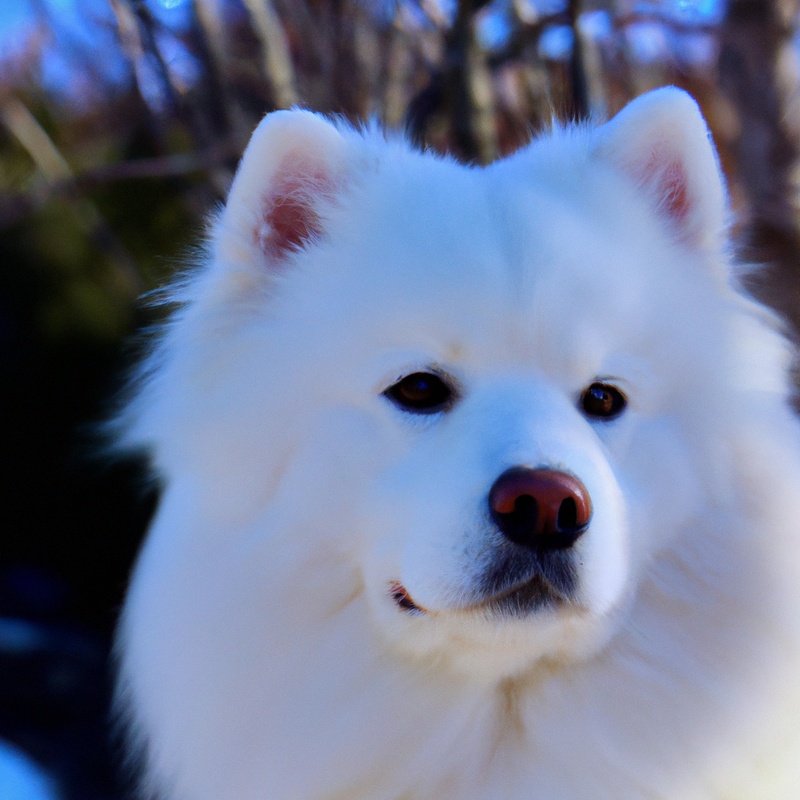
Discuss compatibility with cats
Samoyeds can generally be compatible with cats, but it depends on the individual animals. Proper introductions and supervision are key.
Here are a few tips:
- Slow introductions: Introduce the Samoyed and cat in a controlled environment, allowing them to get used to each other’s presence gradually.
- Positive associations: Use treats or toys to create positive associations between the Samoyed and cat. Reward calm behavior.
- Provide separate spaces: Ensure that both pets have their own spaces where they can retreat and feel safe.
- Supervise interactions: Keep a close eye on their interactions initially, and intervene if any signs of aggression or stress arise.
- Training and socialization: Train your Samoyed to have good manners around the cat, and socialize them from a young age to promote positive interactions.
Remember, each pet is unique, and it may take time for them to adjust to each other. Patience and consistency are key in establishing a harmonious relationship between Samoyeds and cats.
Discuss compatibility with dogs of other breeds
When considering the compatibility of Samoyeds with dogs of other breeds, it’s important to take into account the individual dog’s temperament and socialization.
While Samoyeds are generally friendly and tolerant, they can be assertive and have a strong prey drive.
Introducing them to other dogs should be done gradually and in a controlled environment.
Supervision is key, especially when introducing them to smaller or more fragile breeds.
Proper socialization and training can help ensure a positive interaction between Samoyeds and other dogs.
Some tips for introducing Samoyeds to dogs of other breeds:
- Begin with short and supervised meetings in a neutral territory.
- Gradually increase the duration of interactions.
- Watch for signs of discomfort or aggression from either dog.
- Provide rewards and positive reinforcement for calm and friendly behavior.
- Separate the dogs if tensions arise and try again later.
Remember, every dog is unique, and it’s important to assess compatibility on an individual basis.
Seeking the guidance of a professional dog trainer or behaviorist can be beneficial in ensuring successful introductions and harmonious relationships between Samoyeds and dogs of other breeds.
Discuss compatibility with small animals like rabbits or rodents
When it comes to compatibility with small animals like rabbits or rodents, Samoyeds may not always be the best choice. Due to their strong prey drive, they might see these small creatures as targets for chasing or hunting.
It’s crucial to consider the individual personality of your Samoyed and introduce them gradually and carefully to ensure the safety of all animals involved.
Always supervise interactions and provide proper training and socialization to minimize the risk of conflicts.
Introducing Samoyeds to Other Pets
Steps to introduce Samoyeds to other pets
Introducing Samoyeds to other pets can be a smooth process if done correctly. Here are some simple steps to follow:
- Gradual Introduction: Start by allowing the pets to become familiar with each other’s scent. Use a barrier such as a baby gate or crate to keep them separate initially.
- Controlled Interactions: Once they are comfortable with each other’s scent, allow them to have controlled interactions. Use leashes and muzzles if necessary to ensure everyone’s safety.
- Positive Reinforcement: Reward good behavior and positive interactions with treats and praise. This will help them associate each other’s presence with something positive.
- Supervision: Always supervise their interactions, especially in the initial stages. This will allow you to intervene if any tension arises and prevent any potential conflicts.
- Patience: Remember that it takes time for pets to adjust to each other. Be patient and allow them to progress at their own pace.
Importance of gradual and supervised introductions
I believe that gradual and supervised introductions are essential when introducing Samoyeds to other pets. Taking the time to introduce them slowly allows them to adjust to each other’s presence at their own pace.
It helps to prevent any potential conflicts or misunderstandings between the animals.
By supervising their interactions, you can ensure their safety and step in if needed. It’s important to provide a calm and controlled environment during these introductions for a successful outcome.
Discuss positive reinforcement training techniques
Positive reinforcement training techniques are a great way to train and teach your Samoyed.
By using rewards such as treats or praise, you can encourage desired behaviors and discourage unwanted ones.
For example, you can reward your Samoyed for sitting on command or walking nicely on a leash.
Consistency and patience are key.
Remember to only reward behaviors you want to reinforce and avoid punishing or scolding your Samoyed.
With positive reinforcement, you can create a strong bond and have a well-behaved pet.
Potential Issues and Solutions
Addressing potential conflicts between Samoyeds and other pets
Addressing potential conflicts between Samoyeds and other pets requires proper introductions and gradual exposure.
Start by keeping pets separate but in close proximity, allowing them to become familiar with each other’s scent.
Gradually allow supervised interactions, ensuring both animals are comfortable.
Use positive reinforcement and rewards to encourage friendly behavior.
Provide each pet with their own space and resources to prevent competition.
Seek professional training or guidance if needed.
Patience, consistency, and understanding individual personalities are key.
Strategies to prevent aggression or dominance issues
To prevent aggression or dominance issues with Samoyeds, it’s important to establish yourself as the pack leader.
Here are some strategies to help you maintain a harmonious environment:
- Consistent training and socialization from a young age can greatly reduce the chances of aggression or dominance issues.
- Set clear boundaries and enforce rules consistently, using positive reinforcement techniques.
- Provide plenty of mental and physical stimulation to prevent boredom and frustration.
- Regular exercise is essential to release excess energy and prevent behavior problems.
- Ensure that all pets have their own space and resources, such as food bowls and toys, to avoid resource guarding.
- Supervise interactions between your Samoyed and other pets, especially during the initial introduction phase.
- Seek the guidance of a professional dog trainer or behaviorist if you notice any signs of aggression or dominance.
By proactively addressing these potential issues, you can create a peaceful and happy environment for all your pets to coexist.
Discussion on resource guarding and ways to manage it
Resource guarding is a common behavior in many dogs, including Samoyeds.
This occurs when a dog becomes possessive of a particular item or space and feels the need to protect it from others.
To manage resource guarding, here are some strategies:
- Prevention: Avoid situations that may trigger resource guarding, such as taking away toys or food while the dog is eating.
- Desensitization and counterconditioning: Gradually expose your Samoyed to situations that may trigger resource guarding, rewarding them for calm behavior and gradually increasing the level of difficulty.
- Trading: Teach your dog to exchange the item they are guarding for a higher-value treat or toy, creating a positive association with giving up the item.
- Safe spaces: Provide your Samoyed with a designated area where they can have their own toys and belongings without feeling the need to guard them.
- Professional help: Enlist the assistance of a professional dog trainer or behaviorist if the resource guarding behavior persists or escalates.
Remember, every dog is unique, and it may take time and patience to manage resource guarding effectively.
Frequently Asked Questions
Can Samoyeds be trusted around children?
Samoyeds can generally be trusted around children due to their friendly and gentle nature.
They are known for being great family dogs and are often patient and tolerant with kids.
However, it’s always important to supervise interactions between dogs and children to ensure everyone’s safety.
Teaching children how to properly approach and interact with dogs is crucial in maintaining a positive and safe environment.
Additionally, early socialization and training for both the dog and the child can help foster a strong bond and understanding between them.
Are Samoyeds good with other dogs?
Samoyeds are generally good with other dogs.
They have a friendly and social nature, making them excellent companions for both humans and other animals.
However, it is important to introduce them properly and supervise their interactions.
Early socialization and training can help ensure that they get along well with other dogs.
Always monitor their behavior and step in if any aggression or tension arises.
Proper introductions and consistent positive reinforcement can help Samoyeds build strong relationships with other dogs.
Can Samoyeds live with small animals like guinea pigs?
Yes, Samoyeds can generally live with small animals like guinea pigs.
However, it’s important to remember that each dog is unique and may have different tendencies and behaviors.
Introducing them slowly and closely supervising their initial interactions can help ensure a safe and harmonious coexistence.
Providing separate spaces for both the Samoyed and the guinea pig, and giving each of them their own designated areas, can also help minimize any potential issues.
Additionally, always prioritize the safety and well-being of both animals and intervene if any signs of aggression or stress are displayed.
Do Samoyeds have a high prey drive?
Samoyeds do have a moderate prey drive, which means they may show some interest in chasing small animals such as squirrels or rabbits.
However, their prey drive can vary from dog to dog.
Early socialization and training can help minimize this instinct, but it’s important to always supervise them around small pets.
Providing enough mental and physical exercise can also help redirect their energy and prevent behavioral issues.
Remember to consult a professional trainer for more personalized advice.
Final Verdict
Samoyeds can be wonderful companions for other pets if introduced and managed properly. Their friendly and social nature makes them generally well-suited for living with other animals.
However, it is important to consider factors such as size, energy level, and individual personalities when determining compatibility.
Gradual introductions, positive reinforcement training, and supervision are key to success. While conflicts may arise, most issues can be resolved through proper handling and training.
With the right approach, Samoyeds can happily coexist with other pets, adding joy and companionship to the household.

